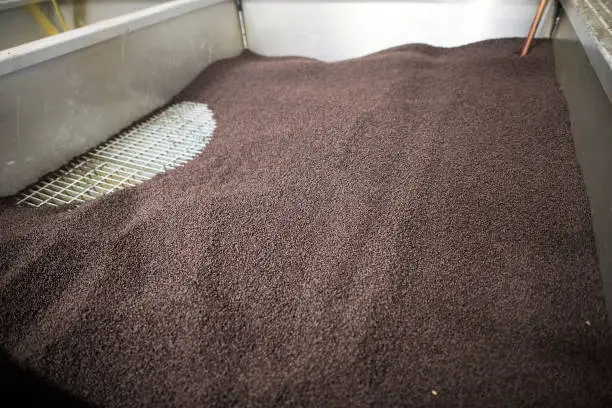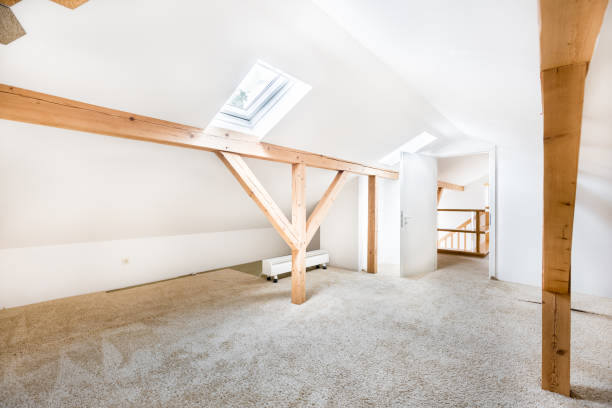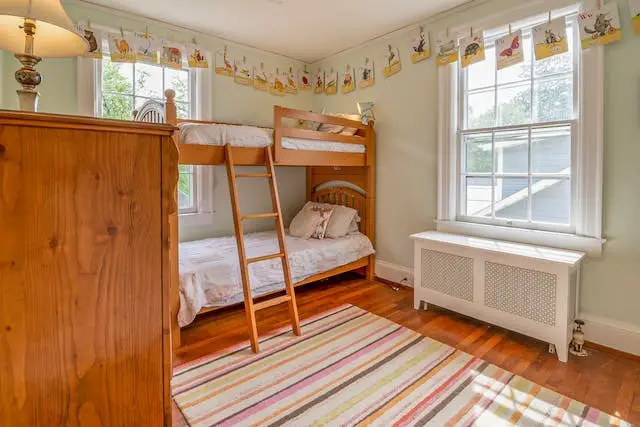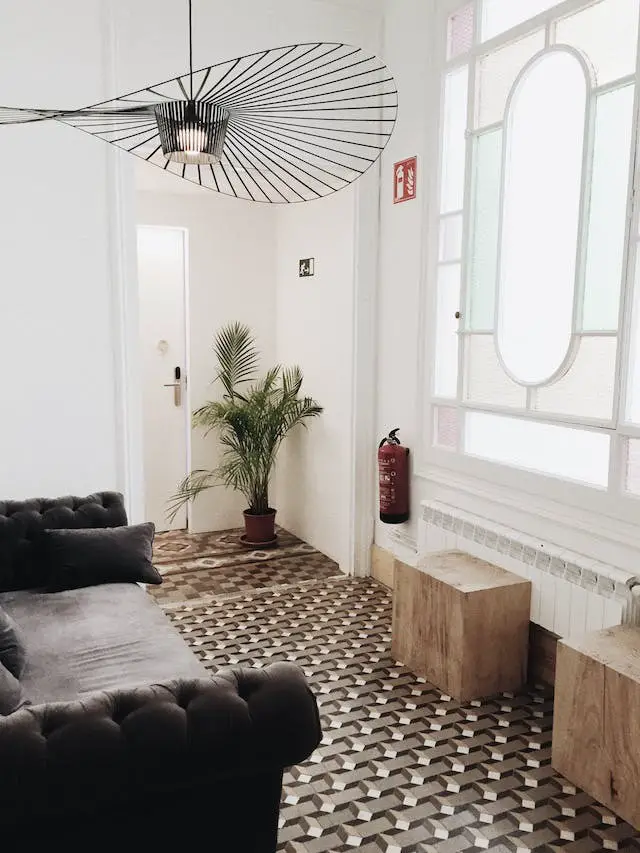Table of Contents
Indoor outdoor carpet for basement is a great way to add style and comfort to your space, while also protecting your floors from moisture and dirt. However, there are a few things you need to keep in mind when installing this type of carpet to ensure a successful outcome.
When it comes to transforming your basement into a comfortable and functional space, installing indoor outdoor carpet can be a game-changer.
It not only adds warmth and comfort to your underground space but also provides durability and style. In this article, we’ll explore the do’s and don’ts of installing indoor outdoor carpet in your basement.

Do’s When Installing Indoor Outdoor Carpet for Basement
- Ensure Proper Preparation of the Subfloor
Properly preparing the subfloor is essential to a successful carpet installation. Begin by thoroughly cleaning the subfloor to remove any dust, dirt, or debris. Make sure it is completely dry, as moisture can cause mold and mildew problems.
Additionally, check for any cracks or uneven spots in the concrete and repair them if necessary. A level and smooth subfloor will ensure that your carpet lays flat and looks its best.
- Select the Right Type of Indoor Outdoor Carpet
Choosing the right type of Indoor outdoor carpet for basement is crucial. Look for indoor outdoor carpets designed to withstand moisture and possible flooding. These carpets are often made from materials that are mold and mildew resistant.
They are durable and can handle heavy foot traffic. When choosing a carpet, consider the pile height, texture and color that best suits your basement decor.
- Invest in Quality Underlay
Underlay, or carpet padding, is often overlooked but plays a vital role in the comfort and longevity of your carpet. A quality underlay provides extra cushioning underfoot, improves insulation, and helps absorb sound.
It also acts as a barrier against moisture, which is especially important in basements where dampness can be an issue. Investing in a high-quality underlay will make your carpet feel more comfortable and extend its lifespan.
- Professional Installation or DIY?
Depending on your degree of experience and the particulars of your basement, you must decide whether to hire a professional installer or lay the carpet yourself.
Although DIY installations can be less expensive, professional installers are better equipped to deal with potential basement concerns including uneven subfloors and moisture issues. If you decide to do it yourself, be sure to carefully follow the manufacturer’s instructions and keep a close eye on moisture control to guarantee a good installation.
Don’ts When Installing Indoor Outdoor Carpet for Basement
- Avoiding Moisture Issues
Moisture in the basement is a common concern, and failure to address it can lead to a variety of problems. Avoid installing indoor outdoor carpet in a basement with unresolved moisture problems.
Make sure your basement has proper drainage and ventilation to prevent waterlogging. Additionally, consider using a moisture barrier or sealant on the subfloor to protect your carpet from any potential moisture-related damage.
- Skipping Cleaning and Maintenance

The life and beauty of your indoor outdoor carpet can be prolonged with proper cleaning and upkeep. Don’t ignore these assignments. Regularly vacuum your carpet to get rid of dirt and debris, and take care of spills and stains right away.
To maintain the best possible appearance for your carpet, it is also advised to do an occasional deep cleaning with the right cleaning solutions. Your carpet’s lifespan may be shortened and premature wear may result from neglecting cleaning and upkeep.
Finishing Touches and Tips for Maintenance Indoor Outdoor Carpet for Basement
After you’ve successfully installed Indoor outdoor carpet for basement, there are some finishing touches and essential maintenance tips to ensure your new floor stays in top condition:
Finishing Touches for Your Basement
- Area Rugs:
Consider installing area rugs in your basement. They can offer a touch of flair and comfort to the space. Rugs also help to differentiate between different functional zones in the basement, such a seating space or a play area.
- Stylish Furniture:
Choose furniture that complements the aesthetics of your basement. Comfortable seating, tables, and storage solutions can make your basement a functional and inviting space for various activities.
- Proper Lighting:
Adequate lighting is essential in a basement. Consider both ambient and task lighting to create a well-lit and inviting environment. Floor and table lamps, as well as overhead lighting, can enhance the atmosphere.
- Decorative Touches:
Personalize your basement with decorative elements like artwork, wall decals, or personal photographs. These touches can reflect your style and make the space feel like an extension of your home.
Maintenance Tips for Indoor Outdoor Carpet
- Regular Vacuuming:
Vacuum your indoor outdoor carpet regularly to remove dust, dirt, and debris. This simple routine maintenance can help prevent dirt from becoming embedded in the fibers and extend the life of your carpet.
- Spot Cleaning:
Address spills and stains promptly. Use a manufacturer-recommended carpet cleaner and follow the instructions. Blot the affected area rather than rubbing to avoid spreading the stain.
- Deep Cleaning:
Perform a deep cleaning of your carpet every 12-18 months, or as recommended by the manufacturer. You can hire a professional carpet cleaning service or rent a carpet cleaner for a DIY approach.
- Protect High-Traffic Areas:
Place rugs or mats in high-traffic areas to minimize wear and tear on those sections of the carpet. This simple measure can significantly extend the life of your carpet.
- Rotate Furniture:
To prevent uneven wear, occasionally move furniture around or change the layout of your basement. This helps distribute the pressure on the carpet evenly.
- Inspect for Wear and Tear:
Regularly inspect your carpet for signs of wear, loose fibers, or damage. Address any issues promptly to prevent them from becoming more significant problems.
- Prevent Direct Sunlight:
If your basement has windows, use window coverings to prevent direct sunlight from fading the carpet. UV rays can cause discoloration over time.
- Consider Carpet Tiles:
If a section of your carpet becomes irreparably damaged, carpet tiles offer an easy and cost-effective solution. Simply replace the damaged tiles without the need for a complete carpet overhaul.

By paying attention to these finishing touches and following the maintenance tips, you can keep your Indoor outdoor carpet for basement looking great and ensure that it remains a comfortable and inviting part of your basement for years to come.
How to Choose the Right Indoor Outdoor Carpet for Basement
Choosing the right indoor outdoor carpet for basement is a crucial step to ensure that it not only looks great but also performs well in this unique environment. Here are some tips on how to make the right choice:
- Consider Moisture Resistance:
Basements can be prone to moisture, so it’s essential to choose a carpet that is moisture-resistant. Look for materials that won’t trap moisture and are mold and mildew resistant. Polypropylene and nylon carpets are excellent choices in this regard.
- Check for Durability:
Basements often see a lot of foot traffic, so you’ll want a carpet that can withstand it. Consider the carpet’s durability and its ability to handle wear and tear. Carpets with a dense and low-pile construction are more durable and will stand up to traffic better.
- Texture and Pile Height:
The texture and pile height of the carpet can affect its comfort and appearance. You might prefer a soft, plush texture, or a more textured surface, depending on your personal preferences and the overall design of your basement.
- Color and Design:
Carpet color and design can significantly affect the aesthetics of your basement. Lighter colors can make a space feel more open and airy, while darker colors can add coziness. Consider the existing decor and lighting in your basement when choosing the right color and pattern.
- Maintenance:
Think about the level of maintenance you’re willing to commit to. Some carpets are easier to clean and maintain than others. Low-maintenance options are ideal for basements since they can handle occasional spills and are easy to vacuum.
- Consider Carpet Tiles:
Carpet tiles are a convenient option for basements. They are easy to install and replace if damaged. You can also mix and match colors and patterns to create a unique design.
- Consult with an Expert:
If you’re unsure about which carpet is best for your basement, consider consulting with a flooring expert. They can assess your specific needs and recommend the most suitable options.
- Request Samples:
Before making a final decision, request carpet samples to see how they look and feel in your basement’s lighting and atmosphere. This will help you ensure that the carpet you choose complements the space.
- Budget:
Assign a budget for the carpet installation. The cost of indoor and outdoor carpets varies, so having a budget in mind can help you focus your search and select an option that suits your spending limit.
- Read Reviews:
Examine reviews from consumers who have had the same carpet laid in their basements before making a purchase. Practical experience can offer insightful information on the performance and longevity of the carpet.

You can create a cozy, fashionable, and long-lasting flooring solution for your living area by taking these aspects into account and doing extensive research before selecting the ideal indoor outdoor carpet for your basement.
Conclusion
You can guarantee a successful installation of indoor outdoor carpet in your basement by adhering to these dos and don’ts. This will help you create a fashionable and comfortable living area while avoiding typical problems that can occur in basement situations.
Adding indoor outdoor carpet for basement can make it a cozy and fashionable living space. You can make sure that your investment stays in excellent shape by adhering to the important dos and don’ts that are described in this article. Don’t forget to give adequate planning, managing moisture, and upkeep first priority.
Frequently Asked Questions (FAQs)
How do I prevent moisture issues in Indoor outdoor carpet for basement?
To prevent moisture issues, use a moisture barrier, ensure proper ventilation, and invest in moisture-resistant carpet and underlay.
Can I install indoor outdoor carpet for basement myself?
Yes, you can install it yourself, but professional installation is recommended for the best results, especially if you’re dealing with moisture concerns.
What are the benefits of indoor outdoor carpet for basements?
Indoor outdoor carpet provides comfort, insulation, moisture resistance, versatile design options, and easy maintenance in basement spaces.
How often should I clean my indoor outdoor carpet for basement?
Regularly vacuum your carpet and address spills or stains promptly. A deep cleaning every 12-18 months is also recommended.
What should I consider when choosing the color of indoor outdoor carpet for my basement?
Consider the overall design of your basement, the amount of natural light, and personal preferences when selecting the color of your indoor outdoor carpet.


Excellent rhythm, please let me know when you make modifications to your website so I may learn from you. How can I register with a blog website? I was aware of this to some extent, but your broadcast provided me with a comprehensive grasp of it, so the account was really helpful.
For days now I’ve been glued to this gem of a site. The owner works tirelessly to engage fans with quality content. I’m mega impressed and can’t wait to see what they wow me with next!
It’s clear that you have a deep understanding of this topic and your insights and perspective are invaluable Thank you for sharing your knowledge with us
I appreciate how this blog promotes self-love and self-care It’s important to prioritize our well-being and your blog reminds me of that
Wow, this blogger is seriously impressive!